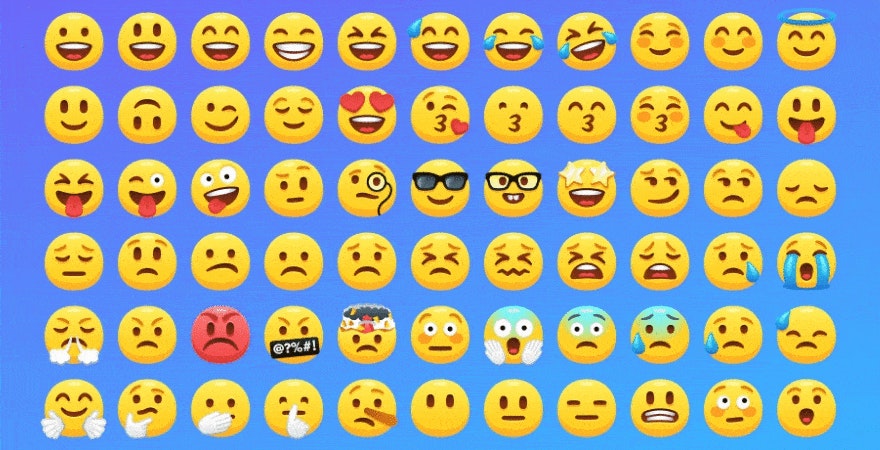Emojis aren’t just for instant messaging. Brands are also starting to incorporate an emoji SEO strategy on their websites to better promote their businesses. From pizza delivery to clothing stores, there’s been a rise in emojis taking over search results and helping brands elevate their website traffic. So if you’re looking to get a head start on a rapidly growing SEO trend, you might want to try some of our tips.
Post Contents
- Why You Should Have an Emoji SEO Strategy
- 1. There’s Search Volume For It
- 2. It Makes Your Search Listing Pop
- 3. Attract a Younger Demographic
- 4. Emojis in YouTube Titles Rank Better
- 5. Elevate Your Emoji Name
- 6. Smaller Brands Can Rank Better
- 7. Emoji Domains Are Now a Thing
- 8. Google Brought It Back
- 9. Increase Your Click-Through Rate
- 10. Emojis in Local SEO
- 11. Improve Product Page Visibility
- 7 SEO Experts Share Why You Should Use Emojis in SEO
- Conclusion



Why You Should Have an Emoji SEO Strategy
1. There’s Search Volume For It
Executing an emoji SEO strategy is always a good choice if there’s search volume to warrant it. Using a Chrome extension like Keywords Everywhere, you can add emojis into your search bar to determine if there’s search volume for emoji keywords. Let’s take a look at one of the most searched emoji SEO examples: pizza delivery.
Using the text-based keywords, “pizza near me” we see that there are 3.35 million searches each month. You can see listings for the pizza chains nearby and content around the best pizza in Toronto, which is where I’m based. So, the content in the search results is clearly personalized to my location.
→ Click Here to Launch Your Online Business with Shopify
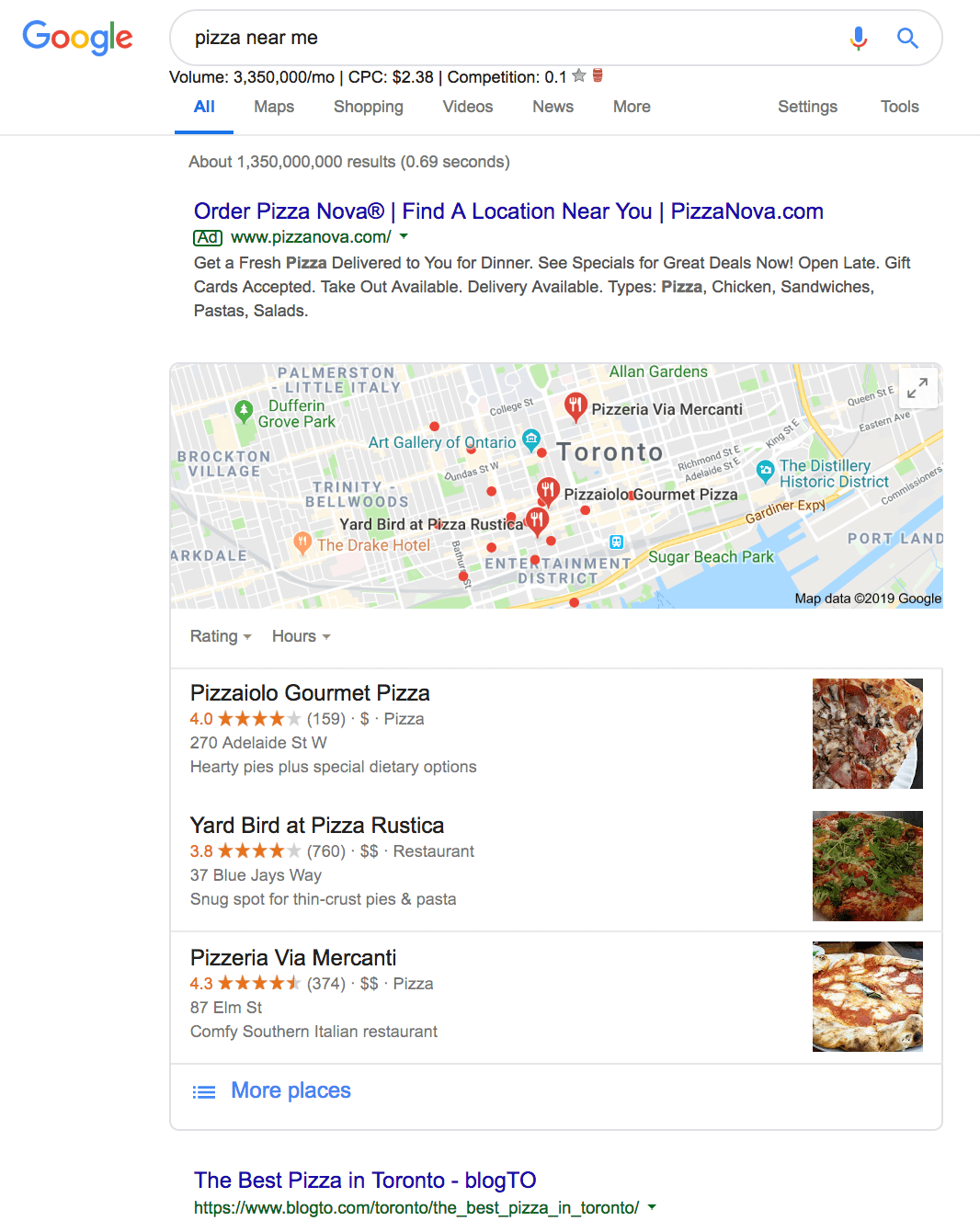
But let’s take a look at what happens when you throw in an emoji of a pizza, instead of typing out the word.
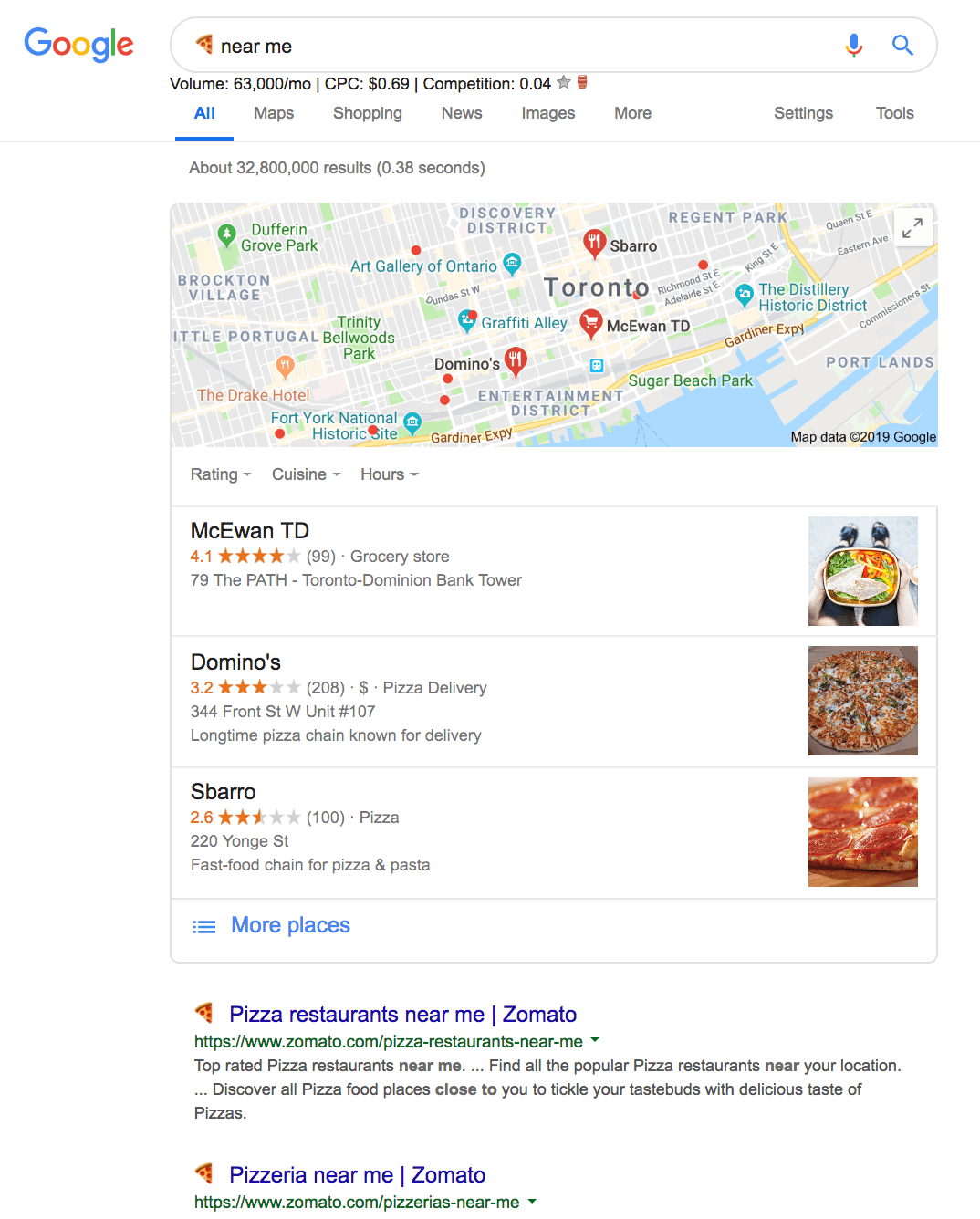
The first thing you’ll notice is that there’s a drop in search volume. However, an important thing to remember is that 63k monthly searches is still some pretty decent traffic. And if you own a smaller pizza chain, you might have a better chance of ranking with emojis in your meta titles than without. Also, you can optimize one page of your website with a pizza emoji and another page without it so you can rank for both search terms.
You might also notice that the listings for the ones nearby change. After a little investigation, we found that none of those local listings used emojis in their SEO or on their listings page. So it’s possible that you could rank for an emoji listing – without using emojis. But still, you’re probably better off throwing that pizza emoji in to gain a competitive advantage.
2. It Makes Your Search Listing Pop
When customers search with emojis, particularly when they shop, they may use words like buy, online, shop, or some other variant. While looking for dresses to buy, we decided to use a dress emoji. Lo and behold, in the fourth position was a search result with the dress emoji. So we have proof that ecommerce brands are in fact using emojis in their SEO strategy.
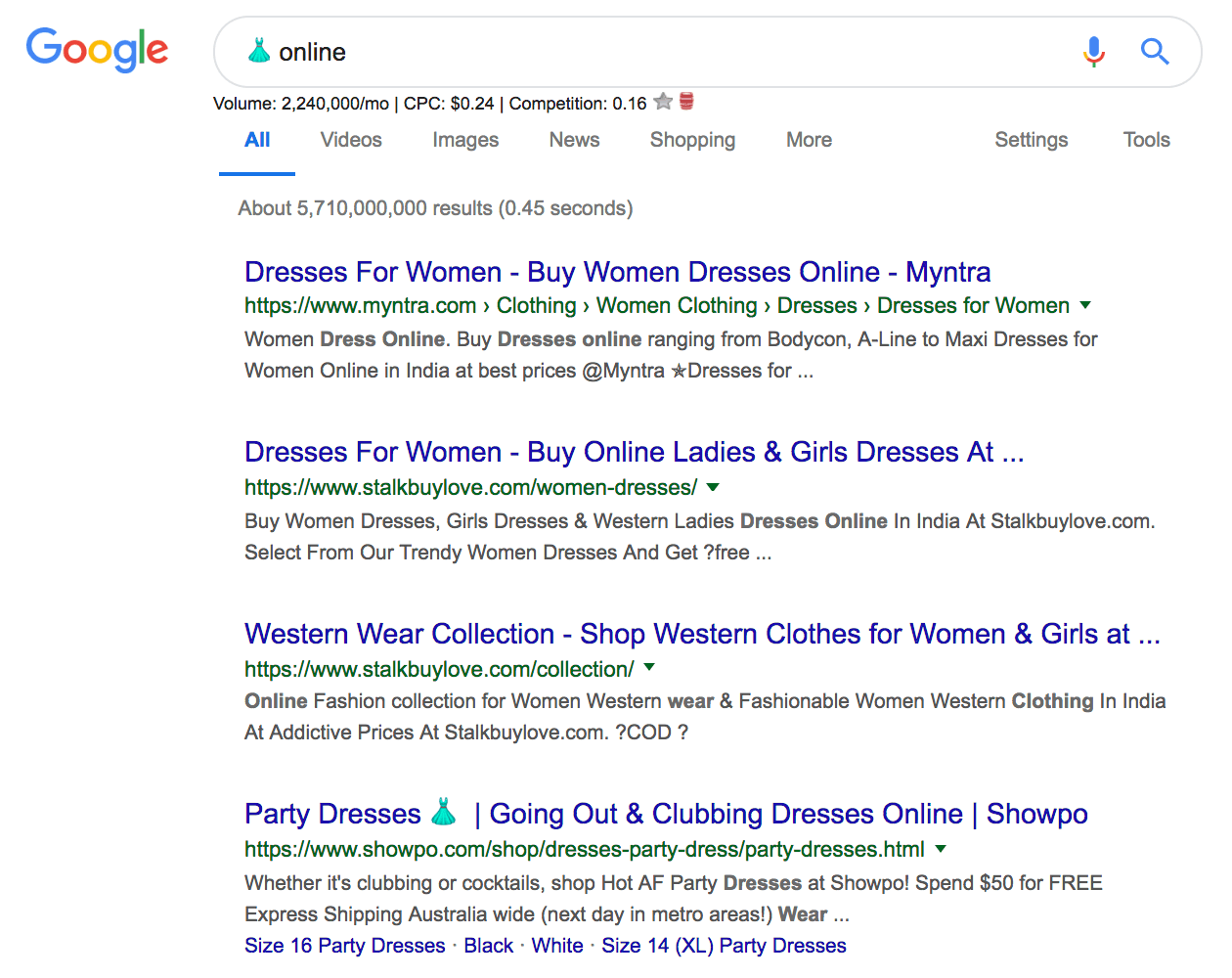
While browsing results, your eye is more likely to be drawn to the emoji since it’s the only graphic in the text-based results. Since your eye is drawn to it, you’re likely to get more clicks back to your website. In a later section, SEO experts will discuss how they’ve received higher click through rates from using emojis in search and ads.
Another thing to notice is that Showpo doesn’t only include the emoji in the listing. You can also see that the listing includes keywords like “Party dresses” and “clubbing dresses online.” So they’re also getting traffic from text-based keywords.
3. Attract a Younger Demographic
Emojis aren’t effective – or appropriate – for all situations. For example, if you’re a funeral home selling a funeral casket, you probably don’t want to use a coffin emoji in your search results. Emojis work well for younger demographics. However, they’re also effective at helping your brand appear more playful. Let’s take a look at Habit Nest’s use of emoji SEO in their web content since they’re all about a younger demographic.

While searching for meditation products, we decided to use a meditation emoji instead of the word. Noticeably, all the top results (including YouTube videos) used the emoji and rank high for it. Also pretty noticeable is how Habit Nest ranks in the first two positions. Not too shabby.
If you head over to their social media profiles, you’ll find that emojis play a big role in the way they communicate. Their Instagram bio is loaded up with several emojis, adding a pop of color. And if you take a look at their content, they tend to share a lot of viral content that appeals to a younger demographic. And so when it comes to adding emojis to their website, it makes sense for their demographic. If you’re targeting a younger audience, emojis can help you better communicate with them.

4. Emojis in YouTube Titles Rank Better
So while we now know that you can rank high using emoji SEO on your website, it’s important to realize this strategy also works well for social. We’ve seen Facebook and Twitter posts rank high in search results for emoji keywords. But let’s take a look at emojis in YouTube titles for a second. While looking for “men’s suit (emoji suit)” we noticed that a YouTube video claimed one of the top spots. The video included the emoji twice. Eventually, we might find that algorithm changes will accommodate for “emoji stuffing” which would essentially be overusing an emoji in a meta title/description or article. However, right now, we’re seeing that you can rank high by adding two of the same emoji in a title.
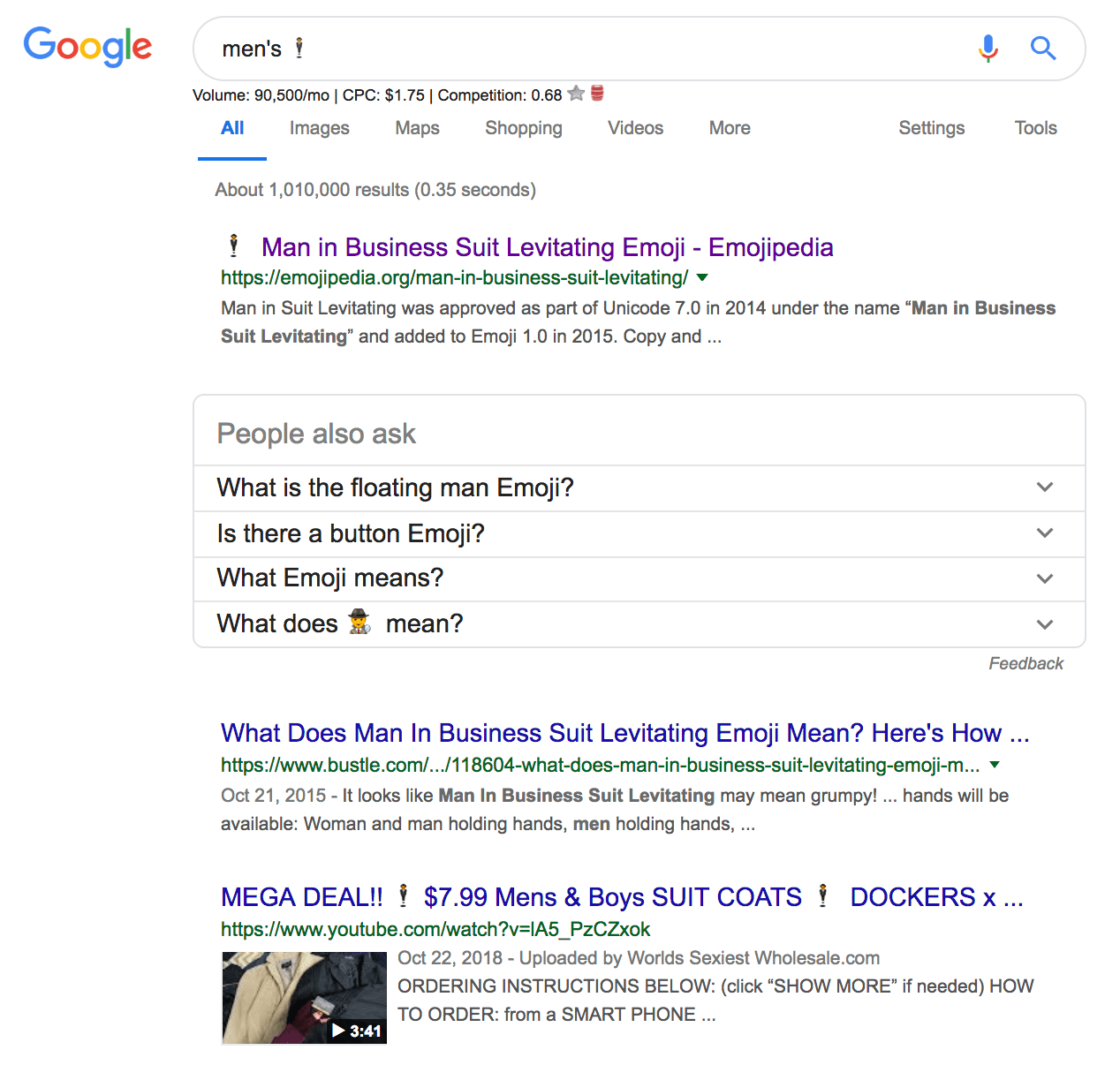
5. Elevate Your Emoji Name
Over the next couple of years, don’t put it past brands to name themselves after emoji keywords. Why? Because if your brand has the same keyword as an emoji name, you’ll be more likely to rank when people search with specific emojis.
Let’s take a look at what happens when you search the text-based “rose wedding.” The first results are images of roses for weddings. The second listing is a popular Pinterest board of roses being used at a wedding: on cakes, in bouquets, and as boutonnieres.
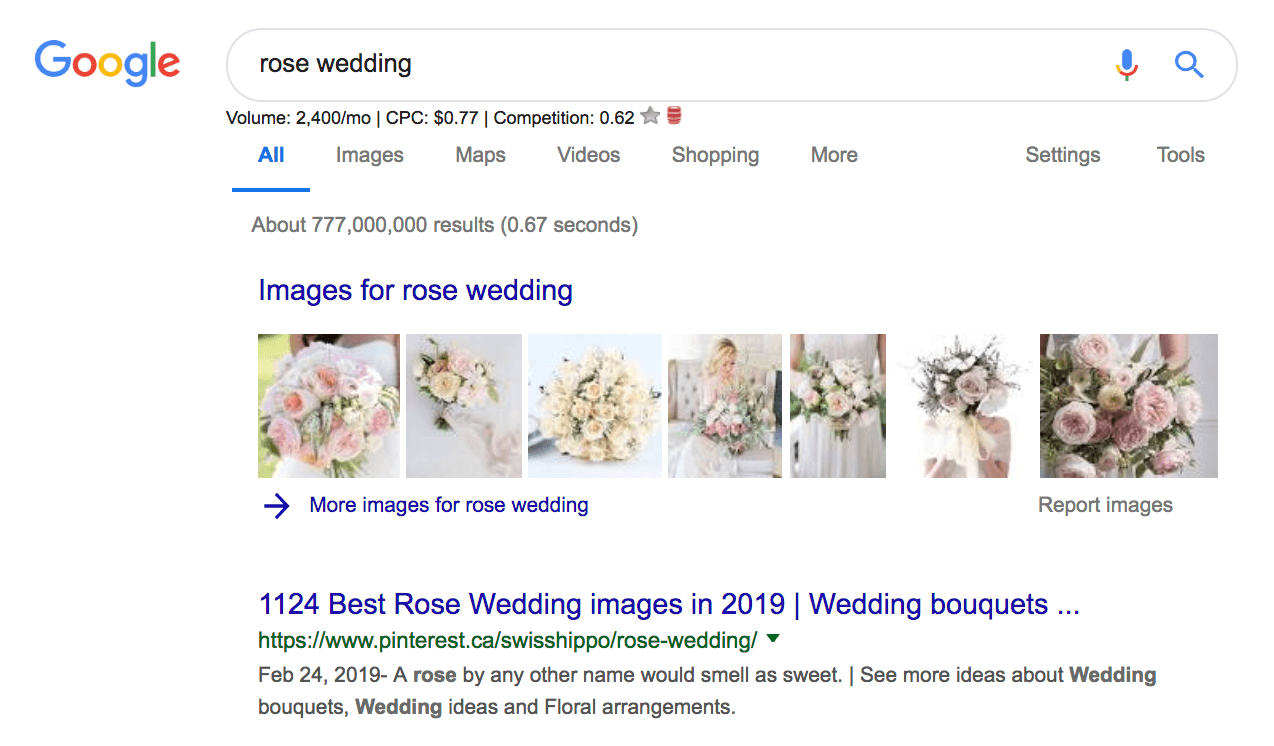
Now, let’s try again but with an emoji of a rose instead. The top results are now nearby bridal shops and brands with the word rose in it. Also, take a look at the difference in search volume between the top listing and the emoji version, making this a perfect emoji keyword opportunity for a brand to jump on – especially if your business name has the word rose in it.
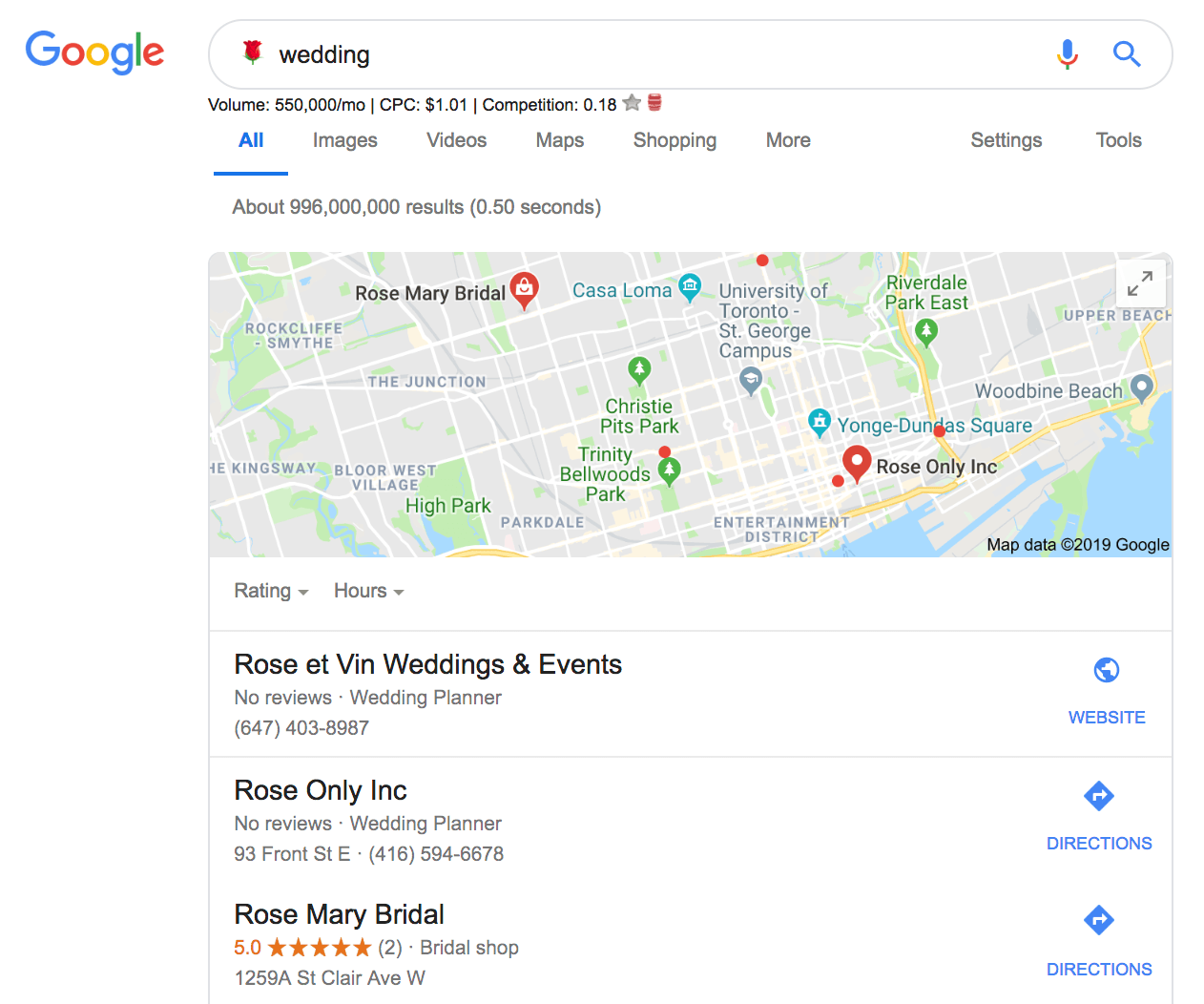
6. Smaller Brands Can Rank Better
Emoji SEO is a growing trend but still an emerging one. The upside to it is that if you’re a small business owner, you can skyrocket your website traffic with this less competitive form of SEO. Take a look at this high volume keyword for “👠 buy,” which has 246,000 monthly searches. As you can see, this is a popular search term as all the top listings have the emoji in it.
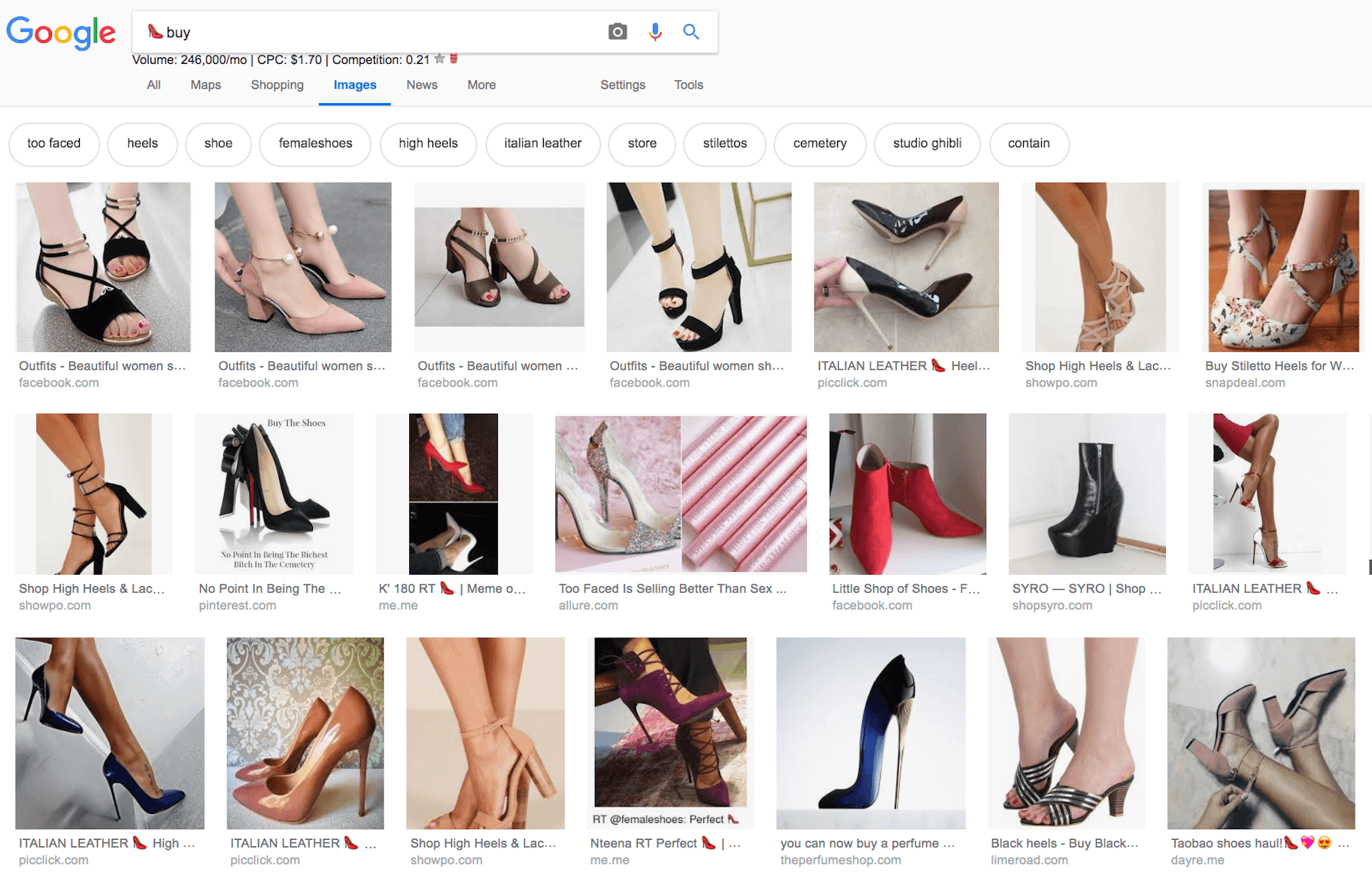
An interesting thing to point out is that the top listing isn’t an established shoe brand. In fact, their Facebook page only has 286 likes and they have 25.8k Instagram followers. So they’re definitely not one of the biggest brands on the market right now. However, after a quick look on SimilarWeb, you can see that search is their highest source of traffic. And it’s likely that this keyword helps play a role in that (though we don’t have the data to show this).
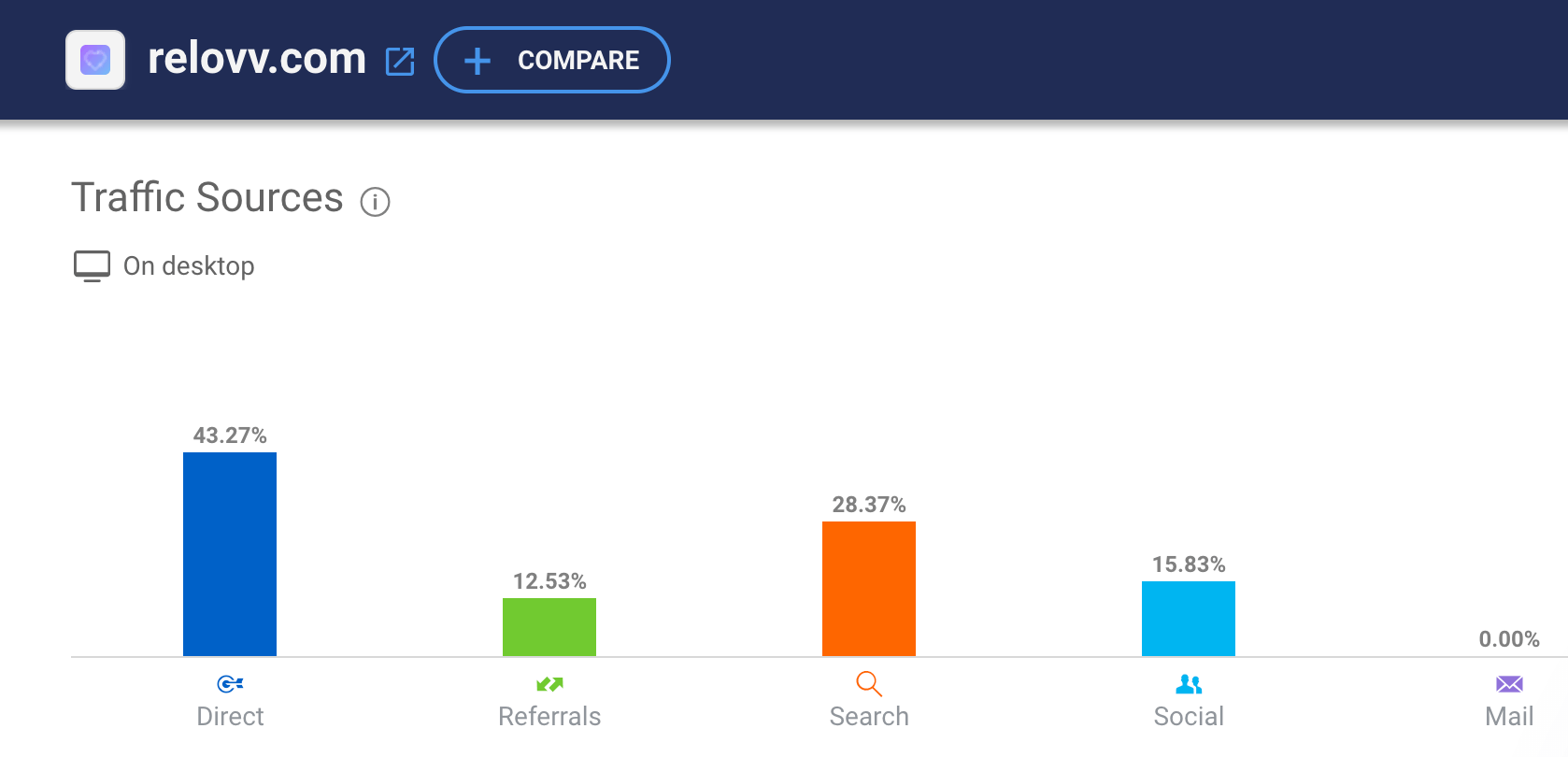
7. Emoji Domains Are Now a Thing
While we don’t know if emoji domains will be a popular trend long-term, it is possible to buy an emoji domain on websites like i❤.ws. If you have a brand that caters to a more youthful audience or if an emoji domain name just makes more sense from a branding perspective, you might want to consider a domain name with an emoji. The upside to this is that your domain name will pop in search listings. The downside to this is that the actual URL doesn’t look like an emoji when visiting the website. Take a look at how it looks on a search listing:

Now, let’s look at the URL on Chrome:

Now, let’s look at the URL in Safari (which actually does include emojis in URLs):

As the trend grows bigger, we may start seeing more internet browsers, like Chrome, showing emojis instead of text in domain names. Still, the trend is early so if you’re planning to jump on it, you’ll want to start now.
8. Google Brought It Back
A few years back, Google first introduced emojis in search results. However, in 2015, they made the decision to remove them from listings. And a couple years later they brought emojis back.
We’re starting to see more brands take advantage of this move. It’s only been a couple of years since emojis were reintroduced and so brands are slowly starting to integrate emojis into their content. Over the next few years, we’ll be seeing smaller brands take over search results for keywords with emojis in it to earn their space in Google’s listing to edge out big competitors.
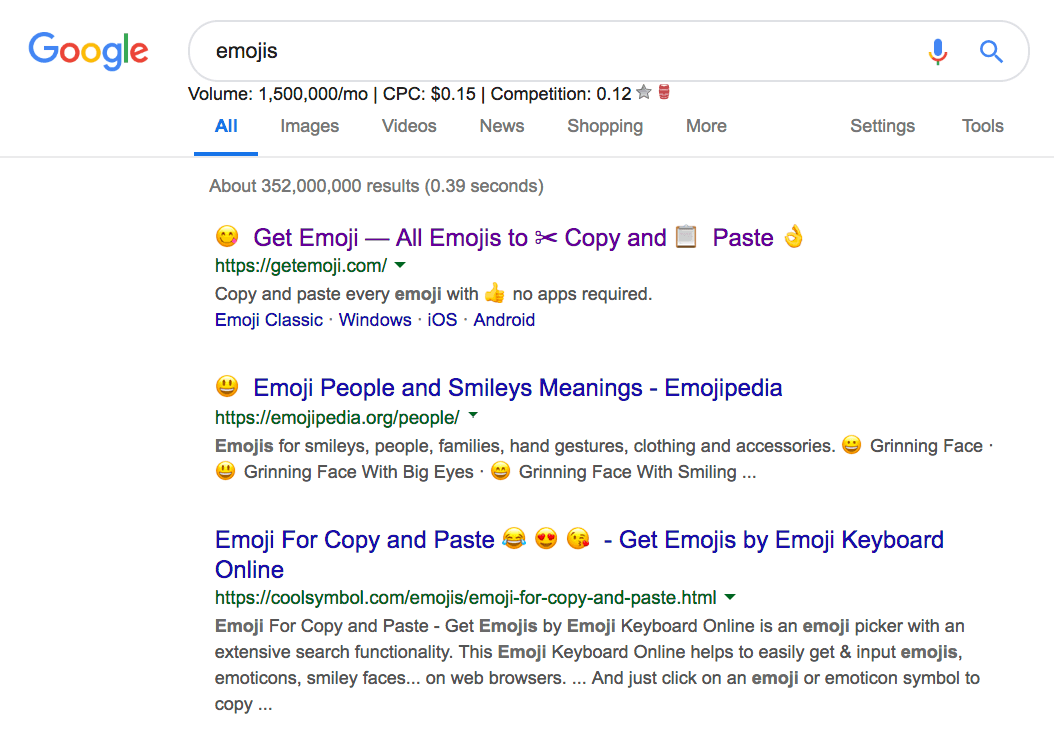
Google’s decision to reintroduce emojis shows that this isn’t a fad but a long-term trend that’ll become more widely used in the SEO world. So if you’re looking to start an emoji SEO strategy, just know that Google is on board.
9. Increase Your Click-Through Rate
While we don’t have data on the click-through rate for brands who use emojis, countless SEO experts have reported that their click-through rate increased with it. When you see an emoji in a meta title or description, the contrast pops to draw the eye. Since more people are noticing the emoji, it’s more likely that they’ll click on it as well.

Some SEO experts – whose opinions you’ll read in a later section – even share that click-through rates increase for ads that include emojis as well. So if Google AdWords is one of your main sources of ad traffic, you can add emojis to potentially get more clicks back to your website.
10. Emojis in Local SEO
After doing a few emoji searches in Google, it’s become pretty clear: emojis help boost visibility for local SEO. If you only sell products online, local SEO might not be too helpful for you. However, if you also own a physical location, you might find that emojis give you a boost in traffic. Especially if your brand name includes an emoji word – like the rose example we mentioned earlier.
While doing a quick search for “Canadian (emoji) shop,” we see a list of nearby stores based in Toronto. While these brands don’t include emojis in their listings, they still benefit by ranking for the emoji keyword. A way to get a competitive advantage over a local listing would be to include a high impact emoji in your store name.
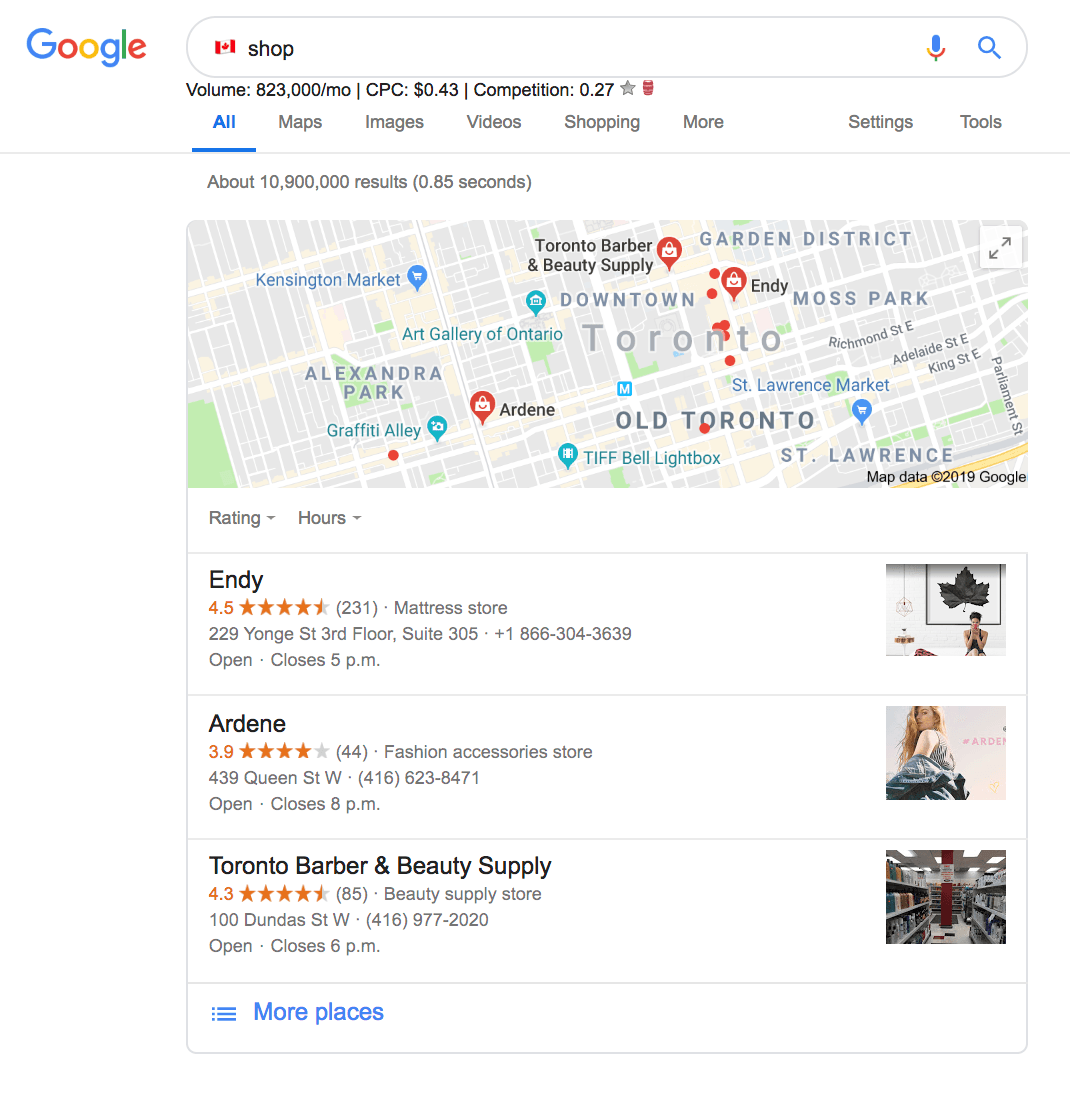
Or like mentioned earlier, giving your brand name the same keyword as an emoji, such as “lulu🍋” instead of lululemon, as you can see here:
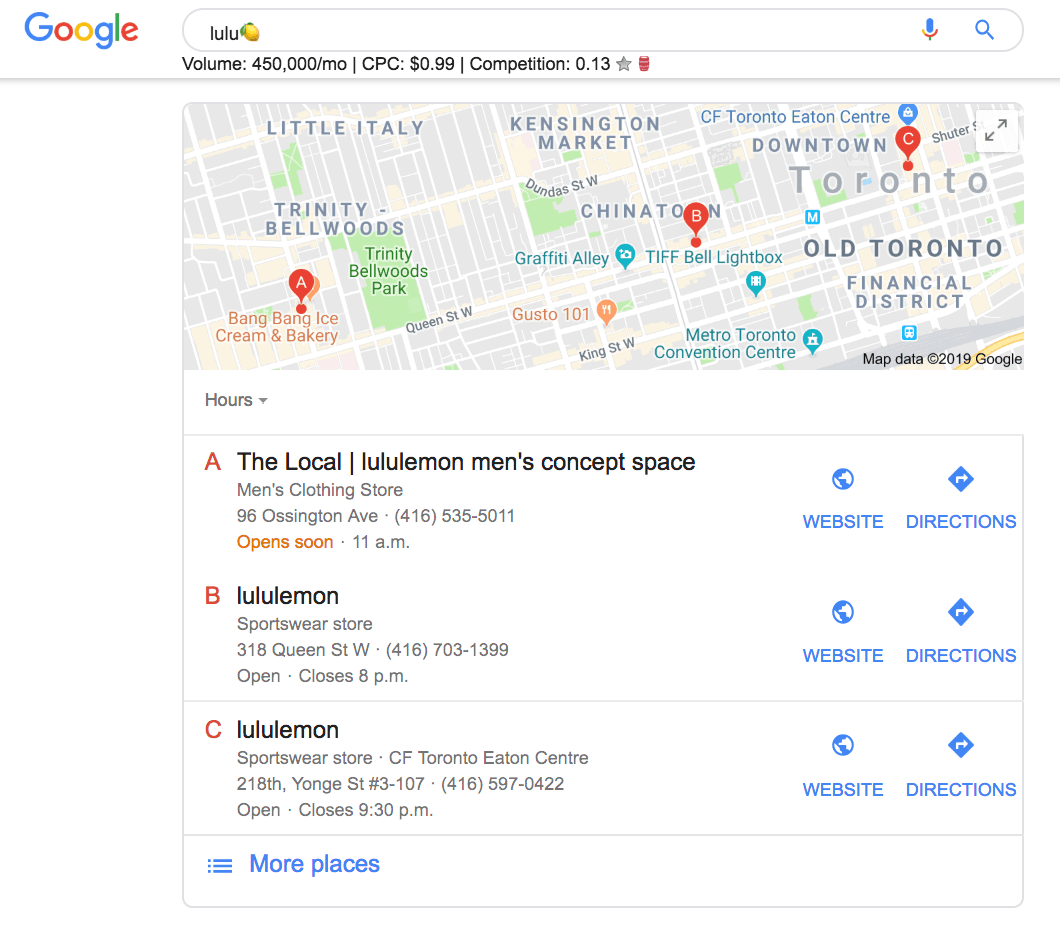
11. Improve Product Page Visibility
So far, we’ve shown that emojis can be used to help you hold high positions in search, social media, and Google AdWords. However, you can also use emojis to help your product pages rank well – in Google Images. While browsing “👠buy” in Google Images, we found that several listings included the emoji in product pages.
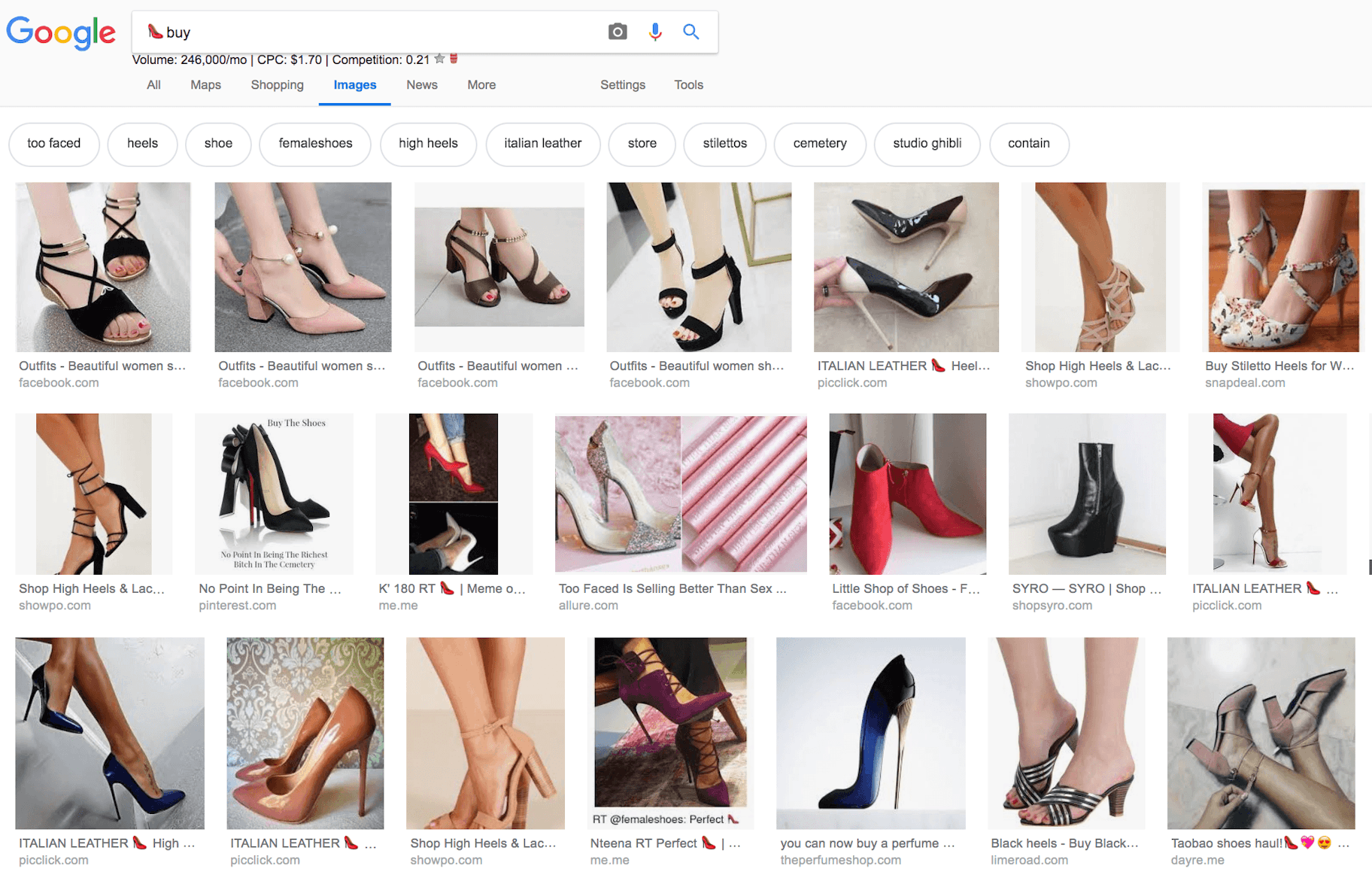
Typically, it’s pretty difficult to get your product page to rank high in search results. However, your product photo and listing could rank well in Images, giving you extra visibility. If you’re looking to give your products extra attention, you might want to choose to include a relevant emoji in the meta title of your product page. Since there’s still less competition, you have a greater chance of ranking for a conversion-focused keyword that lands you more sales.





Pros: It looks nice on search results and has the potential to improve CTR. Cons: The URL looks nasty. Instead of the star symbol, it becomes this: “%E2%AD%90” This will become an issue if other people are linking to your site and might link to a different URL by mistake (has happened a couple times). It’s best to recognize these mistakes and redirect those URLs to the correct one.”






Conclusion
Emoji SEO may be an emerging trend but it’s one worth exploring. From high click-through rates to helping smaller brands grow, emojis add a pop of color in meta titles, descriptions, and URLs to give you more visibility in search and paid ads. By incorporating emojis in some of your top performing articles, you’ll help boost your ranking to build a sustainable source of traffic in search. By jumping on this trend early, you can edge out big brands – and without a big budget. So if you’re looking for some rapid SEO 📈, be sure to test out emojis in your next experiment.
